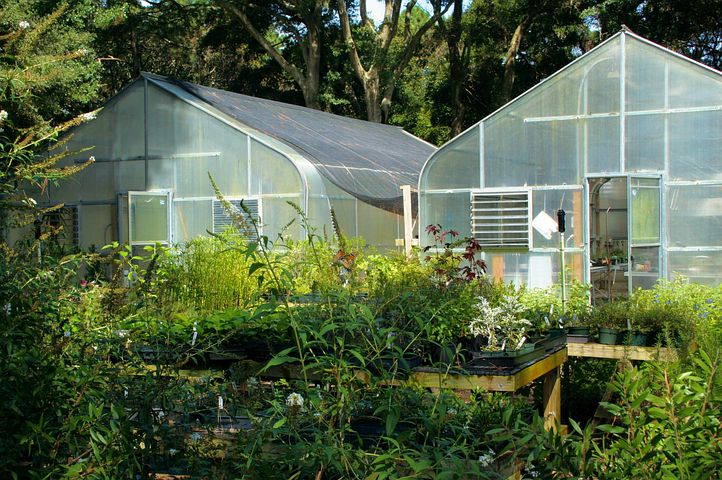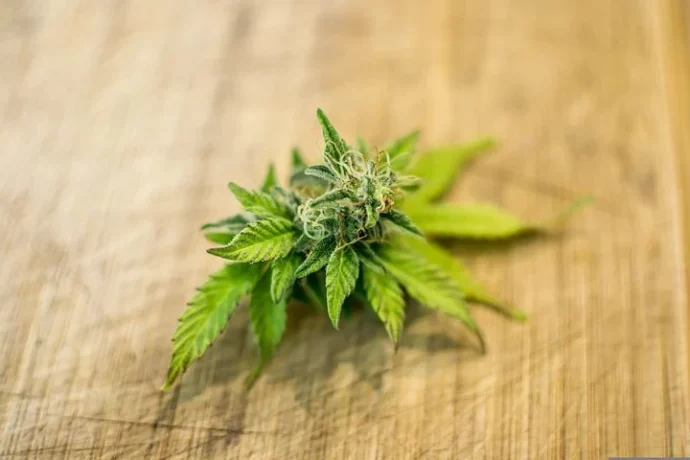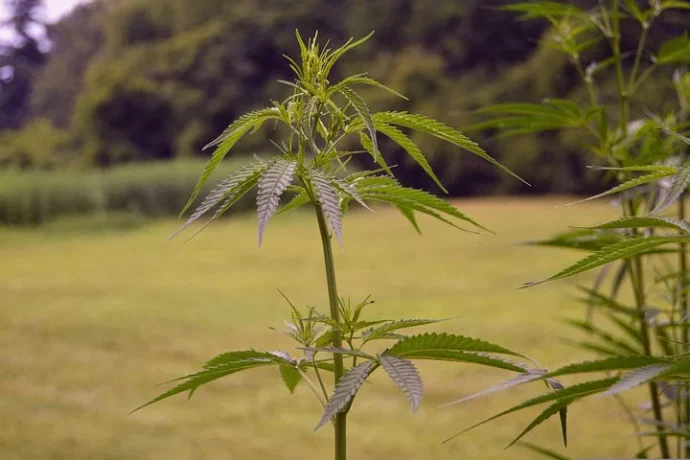The cannabis plant’s life starts in this manner: a healthy seed is dry, firm to the feel, and brown with some lines. It is likely an underdeveloped seed that won’t grow into a robust plant if it feels weak or is white, light green, or either of those colors. If you are searching for how to germinate weed seeds, you are at the right place.
You may begin seedlings indoors or outdoors, but since cannabis seeds have a better chance of surviving indoors, we advise doing it indoors. Outdoor seed germination exposes young plants to wind, bugs, mold, cold, and heat. It’s crucial to protect plants at this time since they are quite fragile.
You can germinate cannabis seeds in several ways. All techniques have varying degrees of success, with both benefits and drawbacks. So, let’s discuss a few of them:
Getting Started
-
Know The Law
Alaska, Colorado, Oregon, and Washington D.C. are the only states that allow the legal and medical use of cannabis. Furthermore, it’s always recommended to look for where is weed legal at least before buying or growing one. In contrast, the remaining 19 states only permit the possession and use of cannabis for medically approved uses.
Before trying home production, you must educate yourself about state rules and regulations. Enter the “state name” and “marijuana laws” into a web browser.
-
Comply With State Regulations And Restrictions
Marijuana cannot be cultivated at residence and is only available in New York, New Jersey, and Washington, D.C., with a written prescription from a doctor authorized to prescribe it.
Only those who reside more than 25 miles from a pharmacy or are granted a hardship waiver can grow marijuana at home in Nevada and Arizona. Marijuana usage by those under 21 is illegal in most states.
The number of marijuana plants you may cultivate (from 0 to 24) and the amount of marijuana you can have at once (from 1 ounce to 24 oz; 10 to 60-day intake) differ per state. If you don’t follow through, you risk breaking the law.
Most states demand that you register and pay a processing fee, which may be anything from $15 to $200.
-
Comply With Federal Laws
Federal laws overrule state laws. The Act regulating controlled substances remains the top priority of the Department of Justice. Growing marijuana is against the law, as is giving it to minors on federal or municipal lands.
-
Comply With International Laws
Whenever it concerns cultivating and possessing cannabis, other nations have their own rules and legislation. To avoid penalties or perhaps incarceration, study the legislation in your nation.
Marijuana may be grown legally in Colombia (20 plants), the Czech Republic (5 plants), Spain, and Switzerland, among other nations (4 plants). Cannabis may only be cultivated in any of these nations for private (therapeutic or pleasure) use; it cannot be exported or marketed.
-
Select The Seeds You Want To Germinate
The greatest cannabinoid in marijuana, delta-9-tetrahydrocannabinol, has a psychotropic impact on people. THC amounts vary depending on the plant’s portion (buds have the highest concentration, followed by leaves, stems, and cannabis seeds), growth circumstances, and subspecies. Untreated or naturally developed seeds will result in plants that are half male (staminate) and half female (pistillate).
The most popular cannabis strains produced for either therapeutic or entertainment activities are sativa and indica. Today, sativa-indica hybrids make up the majority of plants cultivated.
Indica hybrids, which only stand 2-3 feet tall with a diameter of 12–18 inches, are well-known for their tension relieving and sedative effects and are suitable for indoor cultivation.
-
Consider Different Growing Methods
Domestic cannabis cultivation is woefully inefficient with resources and can increase power bills by over 10%. You’ll need to germinate seeds inside. Nevertheless, if you intend to transplant outdoors, you should start your seeds in late March or early April.
In the northern latitudes, marijuana is grown from late May through early October. After fertilization, cannabis plants should be grown indoors for two to three weeks under artificial neon light to provide a kickstart and progressively adapt them to outdoor temperatures.
You may anticipate germination to take two days to two weeks. The ability to regulate temperature, light, and humidity, as well as cultivate plants all year round, are advantages of indoor gardening.
Furthermore, the majority of states demand that cannabis should grow in a controlled environment.
Using Paper Towel Method
-
Place 3-4 Layers Of Paper Towel In The Plate
Although you don’t want to overstuff your plate with paper towels, having a few is ideal so they can contain a lot of water. If required, fold or trim the paper towels to be the proper size for the plate. Everything will dry out fast if there is a paper towel hanging out from the plates.
-
Name The Strains
Mark the hand towels if you’re cultivating more than one strain at a time, and then you’ll recognize which is which.
-
Put Water And Seeds
Put the seeds on top of the paper towels after adding enough water to soak them completely. To prevent accidentally shifting seeds, I first add water. Additionally, keeping the dish flat will prevent the seeds from rolling around.
-
Cover With One Sheet Of Paper Towel
Add one paper towel sheet at the top. You won’t need to touch the seeds to observe if they have sprouted with only one sheet. To ensure that the upper layer is wet all the way through, you might need to add very little additional water.
-
Put Another Plate on Top
This way, you can jail the whole moisture inside, letting no drop escape.
-
Put Up Seedling Heat Mat
Install the heat mat for your seedlings. There should be rapid warming. I’ve done it previously, and it worked great, but occasionally you might worry that the heat from the plate on the mats could be too much for your tiny weed seeds.
You should put a Quick Rooter tray between both the mat and the plate, as you will already have one for later. Consider using a book or towel instead if you like.
The fundamental concept is to leave space between the plate and the heating pad so that the plate will still warm up and the additional air space will maintain a consistent, comfortable temperature.
Don’t let the paper towels get dry. To maintain them moist, you might sometimes need to add extra water. Typically, you can detect when the seeds have begun to grow by peeking on top of the top sheet.
Not pulling up the top plate may periodically check on your seedlings without upsetting them.
-
Place Germinated Seeds In Rapid Rooters
Gently remove the top hand towel to show the sprouts once you have germinated cannabis seeds. Did you realize that the first two round seedling leaves were already completely developed within the shell?
During germination, the seedling releases these leaves. New leaves first seem yellow before becoming green as they begin to receive light. You could see that some seedling leaves have already peeled away from their sheaths at this time.
That’s fantastic. These seedlings frequently develop the quickest. Put the paper towel back and give the seedling another day if there is a small root or if it hasn’t germinated seed yet.
If seedlings have a little more foundation before being placed, they will grow more quickly.
Starting Seeds In Rockwool Cubes
Rockwool cubes are a quick and efficient technique to start marijuana seeds and promote roots. Rockwool is a dependable growth medium for potted seedlings.
-
Prepare Rockwool Cubes
It’s not too difficult to prepare your Rockwool cubes for marijuana seeds. The majority of Rockwool cubes used for seed beginning already have microscopic holes in them.
If yours doesn’t, you may bore one out by carefully twisting a wooden skewer until it is approximately 3/4 of the way through (but don’t press it all the way through).
You want the seed to sit in the bottom of the hole when you add it.
Canna Rhizotonic is a product we like to utilize to promote roots. Once leaves start to develop, they may be used as a foliar application and have been effective for both cloning seeds and rooting seeds.
-
Maintain Proper PH Of Water
Because Rockwool cubes have a higher natural pH, you must reduce the pH of your hydration liquid to balance this. The most important step in developing pot seeds in Rockwool is this one, you should water cannabis seeds with a pH of 5.5 to germinate seeds in Rockwool cubes.
Try to maintain your nutrition solution’s pH as closely as possible. After adding your vitamins, use pH down (or a different acid like lemon or lime juice) to reduce the pH.
Use a pipette to administer each drop of the nutrient solution you make in modest amounts. Test with a pH meter after a gentle mixing. If you exceed that limit, add a pH drop until you reach 5.5.
How To Start Seeds In Rockwool Cubes
You should soak Rockwool cubes in a pint of 5.5 pH water. There is no need for prolonged soaking, but make sure the water is completely absorbed. Include rooting stimulants (such as 2 ml of Canna Rhizotonic per pint of water) to promote root development once the seeds germinate.
Shake lightly to remove excess water after removing it. Using a toothpick, carefully press the marijuana seeds to the bottom of the Rockwool tube.
Put a soft grow light with a moisture dome to provide a warm, humid atmosphere. Germinating seeds is easy. Within a matter of days, the seeds in the Rockwool will start germinating.However, you must also consider buying seeds from a reputed cannabis seed bank so that you will get the quality product.
Planting Cannabis Seeds In Soil
-
Pick Ideal Potting Soil Or Make Your Own
As so many conventional mixes include too much nitrogen or phosphorus, buy an organic soil mix like Sunshine Mix or Pro Mix. Check the bag of any soil mix you buy to ensure the pH is between 5.5 and 7.
Alkaline soil with a high pH is not favorable to cannabis. Pick a soil mixture with good drainage. Sand, sponge rock, or pearlite are frequently included in a one-to-ten ratio in mixes that drain well.
You may add biomaterials like rice hulls or pumice, or you can buy perlite individually and blend it in. Another option is to buy a mycorrhizae combination to combine with store-bought soil. This particular fungus aids in the development of plant roots.
To get rid of fungus and parasites, your homemade soil mix has to be sterilized if you decide against purchasing commercial potting soil. Set your oven’s temperature to 180 degrees.
Non-sterilized soil should not go deeper than 4 inches in a non-plastic oven-safe vessel. Cook it for 30 minutes while covering it with aluminum foil. Take it out of the oven, then let it cool. It is not advisable to remove the aluminum foil before using it.
-
Fill Peat Cups With Soil And Plant Cannabis Seed
Utilize your prepared soil mixture to fill peat cups after sterilizing them if required. Make a tiny hole in the center of the cup that is only 1/4 inch (0.75 cm) deep with your finger. Place one cannabis seed in the opening, then top it firmly with dirt.
Put peat cups in the water-resistant tray. Spray pH-balanced water (between 5.5 and 6.5) into a spray bottle to hydrate the soil, but avoid soaking it.
Stop watering if you detect water dripping into the tray from the cups. Make a dome out of saran wrap to cover the tray. To hold the plastic dome, you may either lay a cup in the middle of the plate or use toothpicks.
After the seeds have been sown, set the enclosed trays with the cups 3 inches above a 40-watt light source. Once seedlings start to sprout, leave on for 24 hours. Check the soil two to three times every day to ensure it is wet. Spray with pH-balanced water if necessary.
-
Monitor The Environment
External variables such as humidity, heat, bugs, bacteria, fungus, and UV radiation can have an impact on the germination and development of cannabis. Place a thermometer close to the moss cups below the dome of plastic wrap.
Ninety degrees Fahrenheit is the optimum temperature for germinating marijuana seeds in topsoil. Reduce the temperature to 70 to 80 degrees Fahrenheit after they germinate seeds and start to make leaves.
If you see insects, get rid of them as quickly as possible, using your hands to avoid an infestation.
What To Look Out For In Cannabis Seeds?
No matter where you purchase your seeds, giving them a quick (but careful) once-over before sowing is advisable.
Most of the time, all seeds will sprout; nevertheless, seeds of lower quality will result in a weaker plant. Unfortunately, you won’t learn it until the vegetative and blooming cycles have already begun.
To manage expectations, remember that seeds with a deeper coloration are more likely to succeed in germination than those with light green or white seeds.
How Long Does The Germination Take?
That initial little taproot will begin to grow when three key conditions are met: heat, humidity, and dark.
A solitary root will begin to develop with the guarantee of humidity before gradually evolving into the cannabis plant we know and love. If the right circumstances are present, seeds will start to grow 12–36 hours after being exposed to moisture.
Depending on how great your germination atmosphere is, timeframes might change. Even the most inept gardener could force a seed to sprout, but it could require a few weeks and naturally raises the likelihood of a lesser plant.
Things To Know About The Cannabis Seed Before You Grow
Appearance
Contrary to other farm products (such as fruits, vegetables, or grains), marijuana has not undergone the rigorous genetic procedures that guarantee a consistent harvest.
Because of this, it’s possible to plant a packet of seeds that are theoretically from the same “strain” yet end up with completely different-looking seedlings. Additionally, it implies that the look of the particular seeds you purchase from a seed vault may vary.
Because marijuana seeds can differ in appearance, some producers believe that a seed’s quality is determined by its size, shape, or color.
We advise against interpreting a seed’s size or form as an indication of its quality.
Some strains yield fewer seeds than others, and occasionally the same plant may yield seeds of various shapes and sizes. Never throw away a seed simply because it is thinner or has a unique form from the others.
Conversely, a seed’s color and texture might reveal a bit more about its development and ability to germinate seeds or develop into a strong seedling. Germinating cannabis seeds through this process is pretty easy.
The rigid outer shell of ripe marijuana seeds typically has tiger-like stripes and can range in hue from really dark (or almost black) to very light gray. These seeds ought to withstand being forcefully pressed between your fingers.
On the contrary hand, young marijuana seeds often have a fragile outer shell that cracks under any pressure and is green in color.
Remember that the straightforward act of storing and packing cannabis seeds can impact how they look. Despite theoretically belonging to the same strain, keep in mind that cannabis seeds differ physiologically from one another, much like animals and other living things. As a result, their physical qualities will vary.
Can You Tell The Gender Of Cannabis Seeds By Looking At Them?
Customers and novice gardeners frequently ask us this question, and the answer is a definite no. Simply put, one cannot determine the sex of a cannabis seed by looking at it.
One of the most well-known ones is based on a graph with five distinct types of seeds, which states that the female seeds have “a perfectly circular volcano-like dip at the bottom.”
This is not accurate at all. Cannabis seeds inherently differ in appearance, as we previously discussed, and no one physical characteristic of seed may indicate whether it carries the genes for a male or female flower.
Whenever a marijuana plant starts to mate, the only method to distinguish a female from a male is by glancing at its flowers. Do not let a well-known online chart convince you to discard completely healthy seeds.
But keep in mind only female cannabis plants can be grown from feminized cannabis seeds, and Feminized seeds produce more buds when they grow into a plant.
What Are Autoflowering Cannabis Seeds?
Plants grown from autoflowering cannabis seeds typically begin blooming between the second and fourth weeks of their lives. Like when cultivating feminized photoperiod cannabis, growers don’t have to worry about adjusting the lighting cycle to trigger and sustain the flowering phase.
In addition, flowers require much less time to mature.
-
Growing Seeds From A Bag (Bagseed)
Any smoker could consider themselves fortunate if they find some cannabis seeds in their bags. Discovering seeds in a sack, though, is undesirable for several reasons. If you are germinating cannabis seeds, bad seeds won’t be a good option.
For starters, this indicates that the grower erred and let one of their female plants be pollinated by an encroaching male.
After being pollinated, flowers cease making resin that contains THC and instead focus their efforts on developing seeds. Second, you will get less cannabis for your money because the seeds will increase the bag’s total weight.
You could strike it fortunate if their growing strain is truly exceptional. To determine if it’s worthwhile to germinate in this situation, it’s recommended to do the subsequent test.
-
Source Your Seeds Well
Choosing a trustworthy seed bank is a good approach to getting high-quality seeds. These businesses take great pleasure in their breeding abilities and ensure that their consumers get what is advertised.
Anything less would damage their reputation since they have reputations to uphold.
The option is to take a chance and purchase seeds from a hobbyist. This does not imply that hobby gardeners cannot generate excellent genetics, but there is no way to tell if your seeds will thrive if you don’t know them or their abilities.
-
Conducting The Float Test
It’s essential to put on your lab coat and safety glasses if you are still uncertain about their quality after examining your seeds’ look and hardness.
We guess not quite. There are just two possible results on this very simple exam. Place your seeds in a glass container or drinking glass filled with water.
Good DNA may be distinguished from bad DNA using this easy and affordable procedure; they sink or swim.
Seeds floating on the surface are almost low-quality and should be thrown away. The seeds that drop to the bottom like a cannonball of plants are probably healthy and ought to be sown.
The float test does, nevertheless, need a little bit of patience because the findings are not always obvious. It will take you between one and two hours to validate the findings, and some seeds of the high grade will require enough time to soak up water for them to drop.
Take advantage of this opportunity to water the garden and complete some much-needed trimming. Any seeds still visible when you return are probably not viable and won’t be worth more time and effort.
It’s crucial to carry out this test only if you intend to plant the following seeds immediately.
Cannabis Seeds Vs. Clone
It could be simpler for the normal home gardener to find cannabis seeds instead of duplicates. Relative to copies, plants produced from seeds can be more resilient than early plants, primarily because seeds have a robust taproot. Even in mild, damp locations, you may put seeds immediately into an outdoor garden in the springtime.
Some gardeners choose to germinate seeds indoors before planting them outside since they are sensitive in the early stages of development.
Should I Consider A Bagseed Or Not?
Mature marijuana buds may include seeds for a variety of reasons. For instance, a male plant may have unintentionally pollinated a female plant that was blossoming while it was still developing. If you want to germinate marijuana seeds, don’t go for bag seeds.
However, they are typically a symptom of stress and can be related to high temperatures during the last stages of flowering or an accentuated surge in the weather or surroundings.
Be realistic with your expectations when starting any plant from a bag seed because stress and genetic problems are typically considered negative. However, occasionally you get fortunate and discover a ripe cannabis seed in a lovely herb. Without intrepid smokers propagating the seeds, they discovered a package of nice buds.
Therefore, don’t disregard bud because it has one or two seeds. That’s not ideal, but it may be where the next great cannabis strain comes from.
To determine whether growing the seed is worthwhile investing the time and effort, ask yourself some questions.
Conclusion: How To Germinate Cannabis Seeds?
You can grow many plants from seeds in the soil. However, cannabis seeds are so delicate that you must start them from seed before planting.Also, you must decide which CBD strain you want to grow as there are different kinds of strains available including harlequin, ringo’s gift, sweet and sour widow and many more.
After their roots have developed, you must place the seedlings in soil, a soilless media, or your hydroponic system. When handling and moving the seedling, be careful not to touch the roots and make sure they point downward.
Plant the seed in your growing medium at an inch depth, softly cover it, and wait about a week for the seed to sprout. By day 10, if the seed hadn’t broken the surface, it probably didn’t make it.








